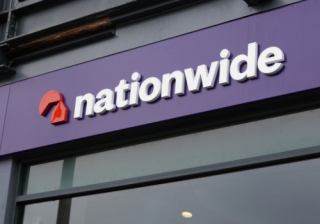Buy-to-let opportunities are out there, despite higher interest and hurdle rates
Barry Searle, managing director of property at Castle Trust Bank, discusses what effect the recent period of economic upheaval is having on the property market and how savvy investors can use this situation to their advantage.

"Landlords could consider using this time to buy up properties in need of renovations"
The aftermath of our last-but-one Chancellor’s Mini Budget announcement has been truly something to behold, leading not only to his own swift exit, but ultimately that of PM Liz Truss only 45 days into her role.
We are all likely sick to death of hearing about the fallout, and there will be more to come, but it would be remiss of me not to consider what effect a period of upheaval like this is having on the property market, and particularly the all-important rental sector.
In the immediate aftermath of the Mini Budget, as the value of the pound plummeted, Moneyfacts found that 40% of overall mortgage products were pulled by lenders. In the buy-to-let sector, the impact was even greater; in September there were 2,075 buy-to-let products on the market, but this dropped to 1,057 as of 4 October, according to Moneyfacts – a 49% drop in product availability.
The numbers may have since started to bounce back, but with economic uncertainty and rising inflation already taking their toll before the latest rotation in No 10, many lenders are looking to use higher pricing and restricted product numbers to control lending and keep the hatches battened down ahead of more stormy weather ahead.
This is added to the fact that buy-to-let stress testing is getting increasingly tight in order to create a greater buffer against future instability. Reports abound of lenders hiking their minimum stress rate, with a current high street high of 8.49%.
So, landlords looking to expand their portfolios are going to be faced with higher rates, stricter stress testing, and a limited pool of products to choose from. This is going to be particularly difficult for those in high price areas, such as London and the South East, where a cheaper property that provides more room for manoeuvre in a stress test might be hard to come by.
Finding the advantage
For some prospective buy-to-let investors, now may simply not be the right moment. However, the picture is not entirely bleak, and there are ways for savvy investors to use this situation to their advantage.
As is ever the case in the UK, rental demand outstrips supply – even more so now, with TwentyCi reporting a 40% drop in advertised rentals in all 20 major cities. As the cost-of-living crisis continues to take its hold, fewer potential buyers will be achieving homeownership, leaving ever more people in need of rental properties.
What the UK does not have is a healthy supply of housing with which to cater for this strong and growing demand. Landlords could consider using this time to buy up properties in need of renovations – this means lower initial costs, helping ease the restrictions caused by higher mortgage rates and restrictive stress testing – in order to bring fresh stock to a market in dire need.
This might also be the time to take a look at up-and-coming markets, away from the capital, where costs might be lower still.
Stable funding
While mainstream, high street mortgage rates are influenced by the regularly-increasing Bank of England base rate, specialist finance is funded differently. While this market is far from insulated against uncertainty, it has not experienced quite the same turbulence, and bridging rates remain relatively affordable – albeit higher by their nature than mainstream mortgages.
Taking advantage of this stability during a time of uncertainty, landlords should consider short-term finance as an avenue through which to fund renovations and refurbishments that could take a cheap property and turn it into a highly profitable investment – without having to service the loan or interest payments whilst works are underway.
This kind of project might take many forms. For example, a larger single use property in need of work could be turned into a house in multiple occupation (HMO) under permitted development, providing a much-needed injection of stock to meet local demand, while also helping the landlord achieve stability through having multiple tenants, potentially avoiding long void periods.
Alternatively, adding fresh new amenities – from refitting a bathroom or kitchen through to transforming a garage or outbuilding into a home office or gym – can shore up the rental value of a property, and keep it in high demand among prospective tenants.
Whatever the project, increasing the value of a property over the space of six months to a year could allow landlords to secure a better buy-to-let mortgage in the future than if they were to buy one of the same value now, or to simply resell for a profit.
Although it might be difficult to see the wood for the rather chaotic trees at the moment, it is worth remembering that the UK rental market is always in need of smart, proactive investors to make the most of any situation.
Breaking news
Direct to your inbox:
More
stories
you'll love:
This week's biggest stories:
FCA
Firms required to report complaints involving vulnerable customers under simplified FCA rules

Santander
Santander joins mortgage price war with new rates from 3.51%

FCA
FCA sets out timeline for mortgage rule changes

Inflation
Bank of England set to cut rates as inflation falls to eight-month low

This week's biggest stories:
FCA
Firms required to report complaints involving vulnerable customers under simplified FCA rules

Santander
Santander joins mortgage price war with new rates from 3.51%

FCA
FCA sets out timeline for mortgage rule changes

Inflation
Bank of England set to cut rates as inflation falls to eight-month low

Nationwide
FCA fines Nationwide £44m for inadequate financial crime controls

FCA
FCA announces new measures to support growth of mutuals sector
